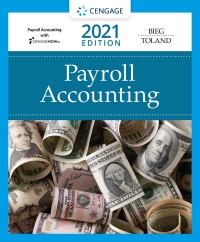Exercise 17-9 Using departmental overhead rates to assess prices LO P2 Way Cool produces two different models of air conditioners. The company produces the mechanical systems in its components department. The mechanical systems are combined with the housing assembly in its finishing department. The activities, costs, and drivers associated with these two manufacturing processes and the production support process follow. Process Activity Components Changeover Machining Setups Driver Number of batches Machine hours Number of setups Quantity 710 7,970 20 Finishing Welding Inspecting Rework Overhead Cost $ 476,000 307,000 227,000 $1,010,000 $ 186,000 229,000 63,500 $ 478,500 $ 143,000 37,000 63,000 $ 243,000 Welding hours Number of inspections Rework orders 5,000 890 210 Support Purchasing Providing space Providing utilities Purchase orders Number of units Number of units 489 4, 800 4,800 Additional production information concerning its two product lines follows. Units produced Welding hours Batches Number of inspections Machine hours Setups Rework orders Purchase orders Model 145 1,700 1,400 355 490 2,650 10 90 326 Model 212 3, 100 3,600 355 400 5,320 10 120 163 Required: 1. Determine departmental overhead rates and compute the overhead cost per unit for each product line. Base your overhead assignment for the components department on machine hours. Use welding hours to assign overhead costs to the finishing department. Assign costs to the support department based on number of purchase orders. 2. Determine the total cost per unit for each product line if the direct labor and direct materials costs per unit are $210 for Model 145 and $180 for Model 212. 3. If the market price for Model 145 is $1,175 and the market price for Model 212 is $310, determine the profit or loss per unit for each model. Complete this question by entering your answers in the tabs below. Required 1 Required 2 Required 3 Determine departmental overhead rates and compute the overhead cost per unit for each product line. Bu assignment for the components department on machine hours. Use welding hours to assign overhead cos department. Assign costs to the support department based on number of purchase orders. (Round your in calculations and per unit cost answers to 2 decimal places.) Components department + Finishing department 0 Support department Components department 02 Finishing department 0 Support department Model 145 Activity Driver Departmental OH Rate Total Overhead Cost $ 0 Components Finishing Support $ $ 0 0 Model 212 Activity Driver Departmental OH Rate Total Overhead Cost 0 Components Finishing Support $ $ 0 0 Required: 1. Determine departmental overhead rates and compute the overhead cost per unit for each product line. Base your overhead assignment for the components department on machine hours. Use welding hours to assign overhead costs to the finishing department. Assign costs to the support department based on number of purchase orders 2. Determine the total cost per unit for each product line if the direct labor and direct materials costs per unit are $210 for Model 145 and $180 for Model 212 3. If the market price for Model 145 is $1175 and the market price for Model 212 is $310, determine the profit or loss per unit for each model. Complete this question by entering your answers in the tabs below. Required 1 Required 2 Required 3 Determine the total cost per unit for each product line if the direct labor and direct materials costs per unit are $210 for Model 145 and $180 for Model 212. (Round your intermediate calculations and cost per unit answers to 2 decimal places) Model 145 Model 212 Materials and Labor per unit Overhead cost per unit Total cost per unit 1. Determine departmental overhead rates and compute the overhead cost per unit for each product line. Base your overhead assignment for the components department on machine hours. Use welding hours to assign overhead costs to the finishing department. Assign costs to the support department based on number of purchase orders. 2. Determine the total cost per unit for each product line if the direct labor and direct materials costs per unit are $210 for Model 145 and $180 for Model 212. 3. If the market price for Model 145 is $1175 and the market price for Model 212 is $310, determine the profit or loss per unit for each model Complete this question by entering your answers in the tabs below. Required 1 Required 2 Required 3 If the market price for Model 145 is $14175 and the market price for Model 212 is $310, determine the profit or loss per unit for each model. (Loss amounts should be indicated with a minus sign. Round your intermediate calculations and final answers to 2 decimal places.) Model 145 Model 212 Market price per unit Cost per unit Profit (loss) per unit











